Dagmar Olrik

Tapestry weaver 1860-1932
When Dagmar was young, she went to The Drawing school for Women and from 1891 she started having paintings of flowers and landscapes on the esteemed exhibition on Charlottenborg.

In Italy she learned to be a weaver of tapestry, and in 1902 she started her main work: The famous tapestries for the city council of Copenhagen - based on sketches by Frölichs. The tapestries took all to 1920 to complete, and she got a gold merit for her work.
The Tapestries are still there today - 2019!

Dagmar - the ghost!
Rumor has it that Dagmar was extremely tight with the many girls working for her on the giant job. Noting every little mistake in her dreaded notebook, and one day a girl just had too much, and hid the notebook in one of the carpets. It was never to be found again - but today they can hear someone walking about in the attic of the city council and strongly believes it's Dagmar - still looking for the notebook.


Hans Thorvald Olrik

Historian, author of school reform
1862-1924

Hans - the historian
Hans started out with a strong interest for history, and as he educated himself in theology, the church’s histories became his first focus, with his masterpiece: Konge og Præstestand i den danske Middelalder (King and priesthood in Danish Middle age)(1892-1895). Note! The book still gets republished and you can get it on amazone!

You'll find more of his books on amazone:
New Teaching methods
Hans however became much more interested in teaching and the theories of how that is done the best. He became so important, that the Danish government sand him abroad and around to visit teaching institutions all around. He came back with a new master plan, that was rejected at the time - but later he was hired by the government to reform the entire teaching of teachers in Denmark.

This book were republished just in 2019, and is still used in teaching theories on universities.
He got appointed professor - and (of course) got knighted by the King.

Axel Olrik
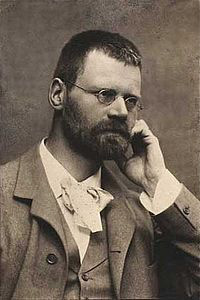
Historian, folklore researcher (1864-1917)

Grundtvig
Axel became almost like a son for Svend Grundtvig (son of the super famous Grundtvig) and thus his first publications was about folklore music: Danmarks gamle folkeviser (Old Danish folksongs).He later published a lot about analyzing and interpretation of poetry and song lyrics.

Saxo
Axel were very interested in Saxo and as early as 1886 he won a gold medal for his theses on the Older Eddas age at the University of Copenhagen. (He was 22)
After that he published multiple books and articles about Saxos work, and other studies of the Northern Mythology.
Here's some examples of titles that still get republished even today:

The father of folklore studies

Axel is a bit seen as the father of the entire subject of research, analyzing and studying of folklore and mythology - almost globally. Universities all over still uses his methods and books in their teaching.
In 1907 he founded the Danish Folklore society, and shortly after the Global Folklore society. In 1913 the University of Copenhagen established a position as professor in the subject for him.
There's also more than plenty of his books on the market today - translated to German, English - even Japanese. Here a small extract from amazone.


Eyvind Gunnar Olrik
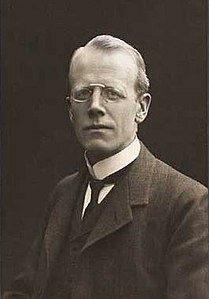
Supreme Court Judge, 1866-1934
Law
Eyvind choose the legal studies and studied and researched different aspects in the principals of justice system - that led rather natural to him getting hired into exactly the judicial system of criminal law - and in 1917 he came to the Supreme court, where he ended up in the highest position as judge.
Publications
Eyvind also published - a lot - of articles - primarily to a magazine about the judicial system. Especially two articles/theses became very noted: one about the medical doctors duty of confidentiality (1905) and later one about Judges in the Danish judicial system (1929)- both were grounds for changes in the Danish system.

Notable tombstone!
Eyvinds impressive last resting place.
The king also knighted him. btw.


Ingeborg Olrik

Teacher 1868-1947
Writer
Ingeborg was educated to become a teacher - and here it's kind of noteworthy to point out, how all the daughters got really good educations, which really were unusual for the time, and shows that Henrik - who decided those matters -most have been rather progressive in his way of viewing the world - regardless of the super old-school 'educational' remark to Hermina about being more feminine towards his sister auntie Grethe.
Popular lady!
Well, the family does have a shortcoming of mental illness, and Ingeborg was actually hospitalized many years - but she was so beloved as a teacher, that she got her position back, when she got out from the institution. Which was extremely unusual for that time - would be even today.
In her younger years had an exciting adventure as the governess for the American ambassador in China! Later she lived mostly in Ringsted, where she also participated actively in local culture. I found a long poem in an old local paper written by her - but a bit to long (and boring) to reproduce here.
An old Danish artist home
She wrote the book about her childhood, when she was 74, and it is unlikely it had a big interest from other than those depicted in it.
It's still on loan in its original copy several places in Denmark (The Royal Library and SAMF (social studies amongst them)), so you can borrow it - even to take home - if you'd rather read in hard copy. (for mysterious reasons unknown to me.)

Jørgen Olrik
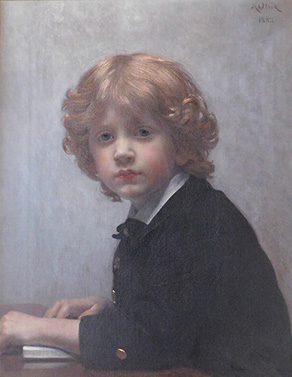
Historien, Museum developer 1875-1941

Museums
Jørgen became a student from Metropolitan and in 1898 majored in history (with Greek and Latin as side subjects) from Copenhagen University.
Even as a student he started working on the National Museum, and in 1910 he became it's CEO, where he completed important tasks as the FrilandsMuseum (open-air historical museum). There were no education back then on how to make and manage museums, so Jørgen taught himself everything about registration and researching artifacts - a knowledge he shared in multiple publications:
Borgelige hjem i Helsingør for 300 år siden(1903)
Drikkehorn og Sølævtøjfra middelalder og rennaissance (1909)Dansk Guldsmedekunst i Renaissancen (1911)
Dansk sølvarbejde fra rennaissancen til vores dage (1915)m.fl.
He of course also got knighted by the King!

Saxo
As Axel he had a huge interest in Saxo, the Middle age and Nordic Mythology. But Jørgen made the enormous work of 'translating'/updating Saxo's Gesta Dorum into a more modern and comprehensible Danish - without disrupting the original text by Saxo.
He did the same maneuver to lots of other texts, tales and stories from old Danish history - and got lots of recognition for his publications and books:
Den ældste Danmarkskrønike (1898)
Krøniker fra Valdemarstiden
Valdemar Sjers sønner
Saxos Gesta Dorum (1908 -1911)
Øm Klosters Krønike
m.fl.
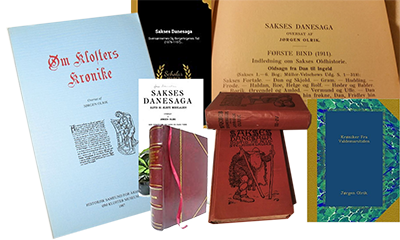
Still modern!
As with his brothers, Jørgens books and articles are still used today in universities
And the 4.th of September this year 2019, one of his books were republished - Amled, as you can see next to this text.
Jørgens wife Hedvig and their children

There was a 4th child that died very young. Here with Hedvig:

Karl Bent Henrik Olrik
1900-?
Here I have to go with, what I have been told, as I can't document it otherwise.
Bent, - as he was called, were as his grandfather Henrik an uniquely talented artist, and already 17-18 years old he were sent to Italy to study the art of painting. But when he came home a couple of years later, he had become mentally ill and so aggressive, that he was hospitalized. The family story then goes that he got lobotomized - but that can't be true, because that praxis didn't start until early 1940sh.
So he either got lobotomized 20 years later, or he got some other terrible treatment of the time -end result being that he spent the rest of his life in an institution painting the most adorable watercolor pictures of flowers - without knowing or understanding who he was.
Ingefred Olrik
1902-1974
I remember her. A very skinny and delicate lady, who had her own kindergarten: Ingefred Olriks børnehave.In this kindergarten she hired the young Sigrid Hammer -who then metIngefreds brother Helge - and became our grandmother.
As old Ingefred became sickly skinny and lived from tea and biscuits. With the glasses of today she should probably had been diagnosed with hypochondria (yes - that is a real mental state) or anorexia.
I remember as a child, I always got one piece of grown up chocolate when visiting her - and that was a challenge, as Ingefred did not have a lot of guest - and of course didn't touch the chocolate herself - do the math on how old they sometime were!
But she was a lovely sweet lady, and remember at least once that she played the piano for me - so she could do that too.
Helge Olrik (1904-1962)
Helge got married to
Sigrid Hammer, that my generation remembers vividly and fondly. He also chose Law, and got in a terrible dilemma during the Second World War. He got appointed to be a judge (by the Germans who occupied us back then) and that meant he had to rule and judge the resistance fighters. But he could then give them verdicts of prison - rather than execution or transportation to the death camps - which is what they would have gotten by the Germans.
But imaging how he most have speculated about how the suddenly very big resistance after the war - would judge him?
Luckily everybody understood, and he even could continue as a judge. He did get a major depression though - kind of understandable - and afterwards he got to be the judge of Varde.

Poul (Povl) Olrik

Billedhugger 1878-1928
Creative arts
Poul worked primarily with wood - but also plaster and bronze.
Among his works is the alter chair in Tåstrup Church, the alter cross in Nivå Chruch (picture) and the alter centerpiece in Christiansø Church. He also made several tombstones for prominent and famous people - amongst them the politician; Vilhelm Lassen.
Apart from that he also made true art sculptors, and he were represented on Charlottenborg several times in the beginning of the 20th century, as he also were on the huge Country Art Exhibition in Århus in 1909.
Private
As with Axel and his sisters Poul did not get any children - that I could find at least.


Benedicte Brummer (f.Olrik)

Painter 1881-1974

Education
Benedicte also started out as a weaver - she learned from Dagmar. But she wanted to be a painter and started out at Dorphs school for painting and later the academy of arts.

This painting is believed to be by Benedicte and I'm pretty sure it must be her and the 2 sisters: Dagmar and Ingeborg.
But who's the man? It can't be her father, Henrik, as he died when she was nine - also he only got to 60 years, so he wouldn't have looked that old. The man in the picture is also to old to be her husband - or any of the brothers.
Yet another Olrik mystery.🤔

Carl Brummer
She married the almost world famous architect Hun Carl Brummer, who later wrote the book: Humans and dogs, in wich there's really interesting descriptions of his encounter with the Olrik family.
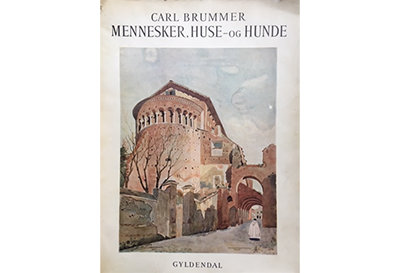
In the beginning he writes how he as a young man passed the family residence of the painter Henrik Olrik, where a baby slept in a baby carriage - that was Benedicte - his later wife.
Later there's an entire chapter about the Olrik family, that you can read on these photos - if you want to - and understand danish.

The women!
Now this webpage is kind of dedicated to Ingeborgs book and the great painter Henrik Olrik - and thus the Olriks - but I will make a small detour into the women of the family - that you share just as much blood and genes with - as the men. And they actually all have really interesting background stories too - again I'll underline, that I'm focusing on Jørgen - my great granddad - and the family line I know the best. So this is about Jørgens wife, daughter in law and of course; mother Hermina.
Hermina Olrik f. Valentiner

Hustru 1839-1917
You actually get to know Hermina quite well in Ingeborgs book.
Also it becomes clear that her father - and the Valentiners - were very wealthy. And being a lonely child, it's a good bet, that she was maybe a bit spoiled, which explains the many references to her childish nature.
Ingeborg also describes her as cheerful, happy, - sometimes naive for the time - and then Henrik made a child with her every time he was back home! 8 of them in all. So she must have been busy.
And then the terrible auntie Grethe moves in - Henriks sister who gave up a good position to help out his brother - but who were also 11 years older than Hermina - and as it sound - felt she overruled Herminas decisions and choices. Tuff on Hermina.

Hedvig Olrik f. Krohn West
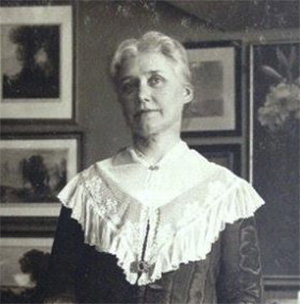
1868-1943
Hedvig came from2 very noble and fine families. Her father was a prominent forester and her mother came from the Krohn- family. Herminas 2 year older cousin is the famous author of Peters Jul Jacob Johan Krohn - that's still a warm-selling book at Christmas.
Note! I'm not a 100% sure the photo is Hedvig - I think it looks like her and it was taken by her son Bent.
Thorvaldsen
On the West-side of the family, Hedvig also represent interesting family story. Her grandad and his brother were Bertel Thorvaldsens best friends, and her great granddad; Grønlund, financed Thorvaldsens family and himself all his life - so much that rumors would have it, that he were Thorvaldsens genetically father. The people working on Thorvaldsens museum today, knows the story, but does not believe it to be true - but hey - who want to listen to them! 😄 The family still owns 4 small portraits of Hedvigs grandparents (West) and great grandparents (Grønlund) - made by himself!

Sigrid Olrik f. Hammer

1904-1993
All the Olrik parents remember her. Simply put she was The Donna Olrik, who gathered and knit the family together.
She was a huge fan of the Olriks - so you seldom heard stories from her own interesting family and life. For example the king; Christian the 10.the came in her childhood home for Sunday coffee. She told me, that it had to do with the freemasons, so her father must have been very important in that movement, for the King himself to visit a priest in the small town of Tølløse - we just haven't been able to verify that story.
As young Sigrid dated the son of Johannes V. Jensens and were taught household as a maid in the house of the famous sculptor Kai Nielsen! So one of the young naked women in the museum of Glyptoteket is farmor Sigrid Olrik!
And despite their priest father she (and her sisters) were very modern. She told several of her grandchildren, that it was healthy to experience sex before marriage - also with the guy you wanted to marry - just to make sure he was the right one. All of the sisters got married with something purple on them - one even in a purple dress, to stop the gossiping up front, - (only virgins can be in pure white).
Second World War
There is also a hugely interesting story about how Sigrid family - of 13 siblings(!) got completely divided during the War. Her own favorite brother; Arne, found the love of his life in Russia just after the revolution. Her family were white-Russians and had been cruelly treated by the communist, so she and Arne helped the Germans translate Russian correspondence - letting the hatred for the communist outshine all reason about not helping the occupation. Another brother was married to a Jewish woman, and they had to escape to Sweden - so one can imagine the dinner conversations afterwards would have been difficult - and probably just stopped.